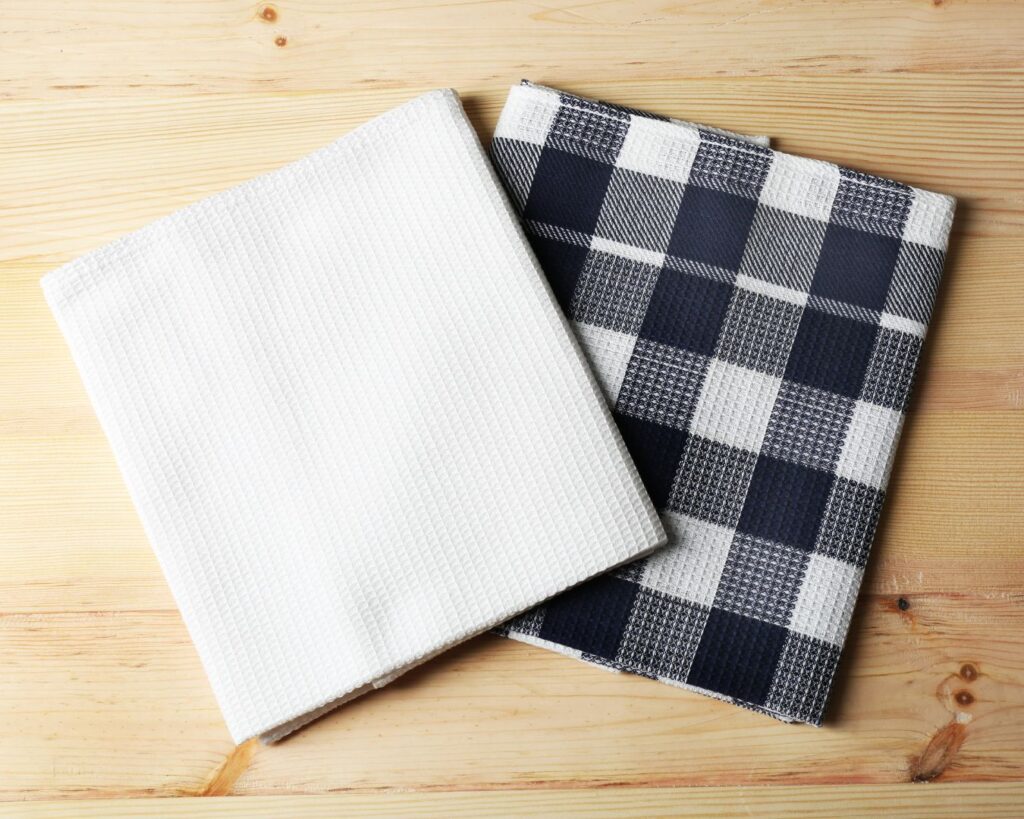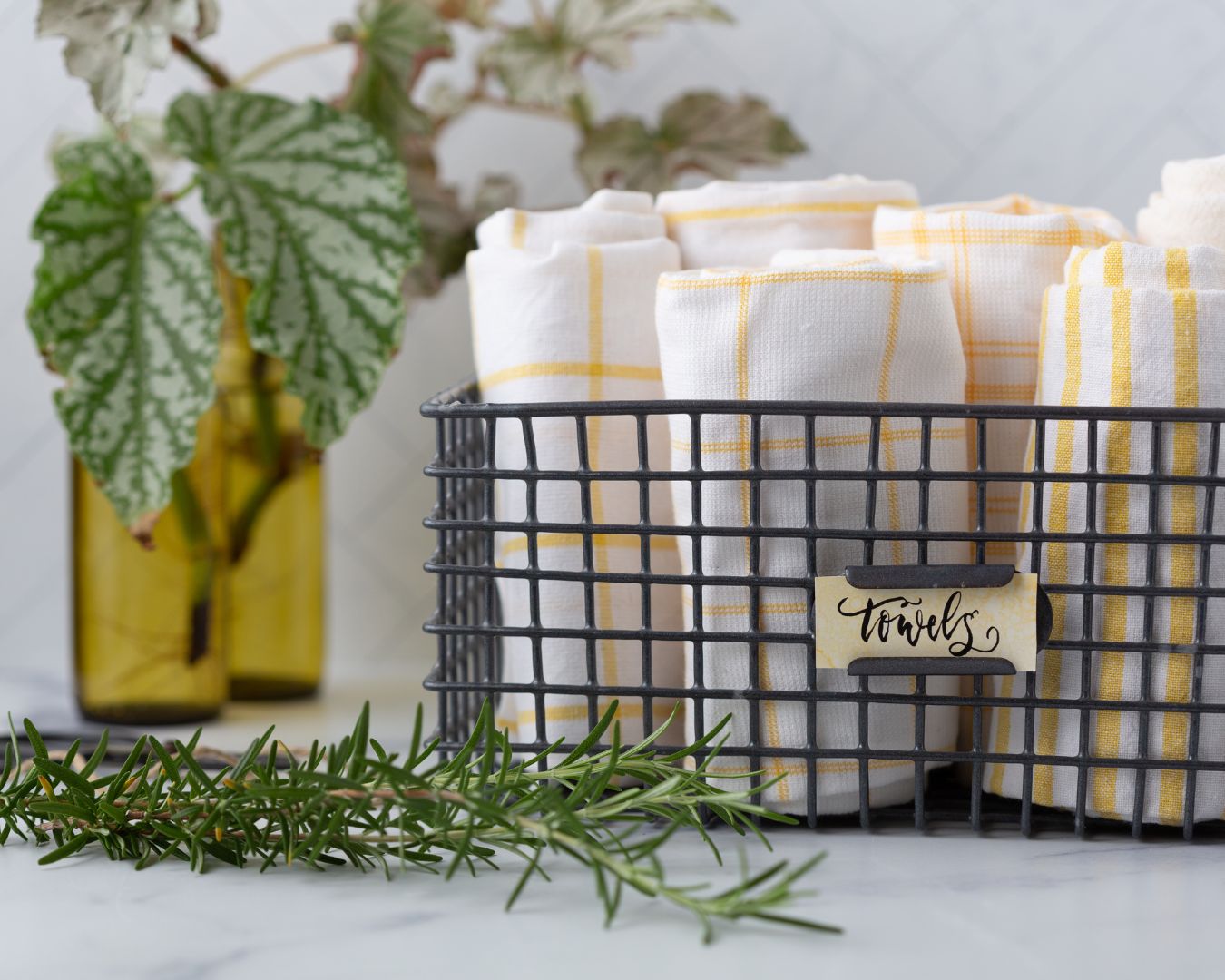How to Choose and Maintain Kitchen Towels for Different Cleaning Tasks
Kitchen towels are an essential tool for keeping your kitchen clean and efficient. However, not all kitchen towels are created equal, and selecting the right ones for different tasks—whether drying dishes, wiping counters, or handling hot pans—can make a significant difference. Maintaining them properly is also key to ensuring their longevity and keeping your kitchen hygienic. Here’s a comprehensive guide on how to choose the best kitchen towels for various tasks and tips for maintaining them.

Choosing the Right Kitchen Towels for Different Tasks
When selecting kitchen towels, consider the type of material and size best suited for each specific cleaning or cooking task.
a) Cotton Towels for General Cleaning and Drying
Cotton towels are soft, absorbent, and ideal for general kitchen tasks such as drying dishes, wiping countertops, and cleaning spills.
- Best For: Drying hands, drying dishes, and wiping counters.
- Why Choose Cotton: Cotton towels are highly absorbent and durable. They can be used repeatedly and are easy to clean, making them a reliable choice for everyday tasks.
- Pro Tip: Opt for tightly woven cotton towels for better absorption and quicker drying times.
b) Microfiber Towels for Detailed Cleaning
Microfiber towels are excellent for tasks that require precision, like wiping down appliances or polishing glass surfaces. These towels trap dust and grime effectively without leaving streaks behind.
- Best For: Polishing stainless steel, cleaning glass, and dusting surfaces.
- Why Choose Microfiber: Microfiber is highly absorbent and dries quickly, but what sets it apart is its ability to pick up dirt and dust without needing harsh chemicals. This makes it perfect for streak-free cleaning.
- Pro Tip: Use a separate microfiber towel for each type of task to avoid cross-contamination between surfaces.
c) Terry Cloth Towels for Absorbing Spills
Terry cloth towels, with their looped texture, are ideal for soaking up large spills or wiping up messes in the kitchen.
- Best For: Absorbing large spills, wiping off greasy surfaces, and cleaning up liquid messes.
- Why Choose Terry Cloth: The loops in terry cloth fabric help absorb a lot of moisture quickly. They are thick and sturdy, making them perfect for more intensive cleaning.
- Pro Tip: Keep a few terry cloth towels on hand specifically for messier jobs, like cleaning up after food prep or spills.
d) Flour Sack Towels for Baking and Proofing
Flour sack towels are lightweight, thin, and made from soft cotton. These towels are great for tasks that require a delicate touch, like covering bread dough while it proofs or drying freshly washed fruits and vegetables.
- Best For: Proofing dough, drying produce, and covering baked goods.
- Why Choose Flour Sack Towels: These towels are lint-free and thin, making them perfect for delicate kitchen tasks. They also dry quickly, which prevents bacteria buildup.
- Pro Tip: Use separate flour sack towels for different food-related tasks to avoid transferring odors or bacteria between produce and dough.
e) Lint-Free Towels for Glassware
When drying glassware or crystal, you’ll want to avoid towels that leave lint behind. Linen or specially designed glass-drying towels are ideal for this task.
- Best For: Drying glassware, crystal, or delicate dinnerware.
- Why Choose Lint-Free Towels: These towels are typically made from linen or a cotton-linen blend, and they leave no lint or streaks on glass surfaces. They are thinner but still absorb moisture effectively.
- Pro Tip: Wash these towels separately from fluffier fabrics to maintain their lint-free properties.

Maintaining Your Kitchen Towels
Once you’ve selected the right towels for your kitchen, proper maintenance will ensure they stay clean, fresh, and in good condition.
a) Wash Kitchen Towels Regularly
Kitchen towels, especially those used for drying hands or wiping surfaces, should be washed frequently to prevent the spread of bacteria and germs.
- Frequency of Washing: Towels used for wiping counters or drying hands should be washed daily or after each use. Towels used for drying clean dishes can be washed less frequently, about every 2-3 days.
- Washing Tips: Wash kitchen towels in hot water to kill bacteria. Avoid fabric softeners, as they can leave a residue that reduces the towel’s absorbency. For heavily soiled towels, pre-soak them in a mixture of hot water and vinegar or baking soda to help remove stains and odors.
Pro Tip: Wash towels separately from clothes, as kitchen towels can pick up grease and food particles that you don’t want transferring to your laundry.
b) Avoid Cross-Contamination
Assign specific towels for different tasks to avoid cross-contamination in the kitchen.
- Separate Towels: Use one set of towels for drying dishes, another for wiping surfaces, and a third for cleaning up spills. Consider using color-coded towels to easily differentiate between them.
- Preventing Spread of Bacteria: Towels that come into contact with raw meat, fish, or poultry should be washed immediately after use. Never reuse these towels for drying dishes or wiping counters without laundering them first.
Pro Tip: Keep your towels organized by hanging them in designated spots. This will prevent them from being used interchangeably and ensures that you always know which towel is meant for which task.
c) Air Dry Towels Thoroughly
Damp towels can become a breeding ground for bacteria and mold. After use, make sure to hang towels in a well-ventilated area so they can air dry completely between uses.
- Air Drying Tip: Avoid leaving towels in a heap or on countertops. Instead, hang them on hooks or towel bars where they can dry evenly. If your towels don’t dry fully during the day, switch them out for a fresh one.
- Machine Drying: When drying towels in a dryer, avoid high heat, as it can damage the fibers and reduce the lifespan of the towel. A medium heat setting is usually sufficient.
Pro Tip: Consider purchasing quick-dry towels if you live in a humid environment or if you frequently use towels throughout the day.
d) Treat Stains Promptly
Kitchen towels are prone to stains from food, grease, and sauces. Treat stains as soon as possible to prevent them from setting.
- Stain Removal Tip: Apply a mixture of baking soda and water or dish soap directly to the stain and let it sit for 15-20 minutes before washing. For tougher stains, pre-soak the towel in hot water with vinegar or hydrogen peroxide.
- Avoid Bleach: While bleach is a powerful cleaning agent, it can weaken the fibers of your towels over time. Opt for oxygen-based cleaners or natural alternatives like baking soda and vinegar.
Pro Tip: If you do use bleach, limit it to white towels and only use it occasionally to prevent fiber breakdown.
e) Replace Worn-Out Towels
Even with proper care, kitchen towels will eventually wear out. Pay attention to signs of wear, such as fraying edges, thinning fabric, or a musty odor that won’t go away, even after washing.
- When to Replace: Towels that have lost their absorbency or are showing visible signs of damage should be replaced. You can repurpose old towels for less demanding cleaning tasks, such as wiping floors or cleaning the car.
- Regular Updates: Depending on how often you use your towels, aim to replace them every 6-12 months for optimal hygiene and performance.
Pro Tip: Rotate your towels regularly, using all of them evenly to avoid wearing out just a few. This can extend the life of each towel.
Choosing the right kitchen towels for specific tasks can make your kitchen cleaning routine more efficient and hygienic. Whether you need a durable terry cloth towel for absorbing spills or a lint-free towel for drying glassware, having the right towels on hand is essential. By maintaining them properly—washing regularly, air drying thoroughly, and treating stains—you’ll ensure they remain in top condition and serve you well in the kitchen. With a little care and organization, your kitchen towels will help keep your cooking space clean and efficient.

